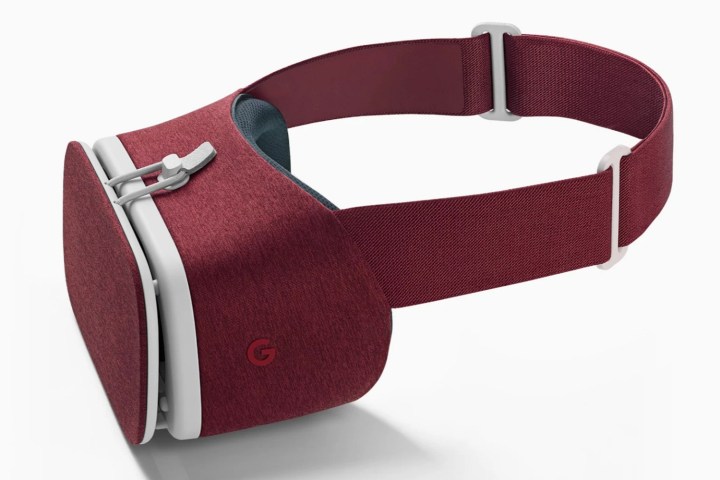
Naturally, Google couldn’t be left out of the smartphone-based VR picture given Gear VR relies on Android, so the company created Google Daydream for smartphones based on Android 7.1 “Nougat.” It was launched on November 10 and is embedded within Android so all customers need to do is purchase the Daydream View headset.
When Daydream View originally hit the Google Store in November, the company only served up a model in “Slate” gray. Now Google is offering two additional color schemes: “Crimson” red and “Snow” white. All three cost $80 each, and include a motion-sensing controller for interacting with the virtual world. Of course, penny pinchers can still purchase the Google Cardboard kit, but Daydream View is built specifically for Google Daydream high-res mobile VR and is a more comfortable fit, too.
Like Gear VR, the Daydream View headset requires the Android smartphone to slip into the front compartment. The smartphone’s display then creates two windows on the same screen — one for each eye — that are seen through the headset’s included lenses. The images are then compiled in the wearer’s noggin, providing the illusion of a single, immersive virtual environment.
Google pitches Daydream View as a more comfortable fit thanks to its cloth exterior and a single headband that wraps around the wearer’s skull. Even more, Gear VR requires the smartphone to gently plug into a special built-in connector, and leaves the back of the phone exposed. Daydream View instead uses NFC technology and capacitive nubs to communicate with the phone. It provides a protective backing too.
Smartphones compatible with Google Daydream will come with the Daydream app installed. The NFC chip embedded in the headset’s tray tells the phone to launch the Daydream app while the tray’s capacitive nubs tell the app where to render the two views on the screen. Unlike the Gear VR, the phone’s USB port is not used by the headset, allowing owners to plug in a power cord when the battery gets low –and it will get low fast, especially when VR gaming.
If you’re curious about the hardware that powers the Google Daydream platform, look no further than the company’s Pixel smartphone. It’s based on Qualcomm’s Snapdragon 821 quad-core processor, 4GB of LPDDR4 system memory, and a 5-inch AMOLED screen with a 1,920 x 1,080 resolution (5.5 inches on the Pixel XL). The battery promises up to 13 hours of video playback on a single charge, but expect VR applications to eat that battery even faster.
Right now, there are five smartphones that support Google Daydream and the three headsets: the Pixel and Pixel XL from Google, and the Moto Z, Moto Z Droid, and Moto Z Force Droid from Motorola. More Daydream-compatible phones are on the horizon, so Google’s VR solution is just as limited as Samsung’s Gear VR platform for now.

